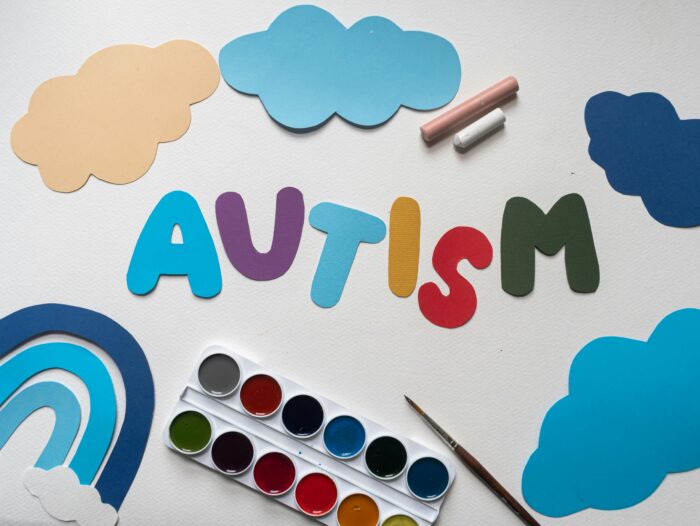
Finding the right support for a child with autism can feel like navigating a maze, full of hope, questions, and choices. One path that often comes up is Applied Behavior Analysis, or ABA therapy. It’s a journey many parents and caregivers consider, drawn by its promise and yet pausing at the crossroads of debate and discussion.
Does ABA therapy work? Is it the right fit for your child? According to research, it does, but there’s more to it than science.
By exploring scientific studies and expert analyses, we’re going to provide a comprehensive overview of ABA therapy’s role in autism treatment, but also address the main concerns around it so you can be rest assured you’ve chosen the best treatment for your child.
Understanding the Basics: What Is ABA Therapy?
Applied Behavior Analysis (ABA) is a therapeutic strategy focused on improving specific behaviors, primarily used in treating individuals with Autism Spectrum Disorders (ASD). Rooted in behaviorist theory, it emphasizes the modification of behaviors through reinforcement techniques.
ABA therapy is highly individualized, with strategies tailored to each person’s unique abilities and challenges. It’s particularly effective in developing social skills, communication, and adaptive learning skills.
The effectiveness of ABA, often gauged through improvements in these areas, varies depending on factors like therapy intensity and individual responsiveness, thereby often raising the question, “Does ABA therapy really work for autism?”. And, as numerous research and parents have confirmed, it really does.
Evaluating the Impact: Is ABA Therapy Effective?
If you’ve had your doubts about the ABA therapy, here are a couple of scientific studies that have confirmed its success in treating kids on the autism spectrum.
- A scientific review of 770 studies on ABA therapy for kids confirmed beneficial effects of ABA therapy for kids with autism.
- Furthermore, they made a good point that the U.S. Department of Health and Human Services recommends ABA therapy for autism and most insurance covers it across North America.
- A comprehensive study from 2020 analyzed 14 randomized control trials of 555 participants (children with autism), finding that ABA therapy has benefits for kids’ socialization, communication and expressive language.
- One can’t discuss ABA therapy’s success rate without including the pioneering work of Dr. O. Ivar Lovaas, supporting its positive impact and stating the success rate is 89%. Lovaas’s study from 1987, called “Behavioral Treatment and Normal Educational and Intellectual Functioning in Young Autistic Children” is particularly noteworthy, as it demonstrated substantial improvements in the educational and intellectual functioning of young children with autism who received intensive ABA treatment.
The study reported that a significant portion of the children in the intensively treated group exhibited marked improvements in IQ and mainstreaming capabilities compared to those who received minimal treatment.
These findings are vital in understanding the efficacy of ABA therapy, especially in early intervention. They suggest that ABA can play a critical role in enhancing developmental outcomes for children with autism, as we ourselves are witnessing the ABA progress with our clients and their families.
However, it’s important to note that individual responses to ABA therapy can vary, and the success of the treatment depends on various factors including the intensity and consistency of the intervention.
For this reason, the initial consultations we have with parents are crucial, as well as monitoring the progress of the child every step of the way.
Can ABA Therapy Help with Different ASD Types?
ABA is highly adaptable and versatile, offering valuable support to individuals across the Autism Spectrum Disorder (ASD) spectrum. This inclusivity extends from those with low-functioning ASD, characterized by significant impairments in communication and daily living skills, to individuals with mild or high-functioning ASD who may have greater language abilities and social potential.
For individuals with more severe forms of ASD, ABA therapy often concentrates on teaching essential life skills, reducing challenging behaviors, and establishing effective communication strategies.
On the other hand, for those with mild or high-functioning ASD, the focus shifts towards enhancing social skills, fostering independence, and refining adaptive behaviors that are vital for navigating daily life.
Finally, ABA therapy can also be used for a variety of disorders, some of which usually affect children on the spectrum.
Controversies and Concerns: Is ABA Therapy Harmful?
While ABA therapy is widely used in treating autism, it’s not without its controversies and criticisms. A primary concern is the perception of ABA as overly rigid and structured, potentially stifling creativity and spontaneity in children. Critics argue that the focus on behavior modification may overlook the child’s emotional needs and inner experiences.
Another significant criticism centers around ABA’s historical methods, which some have described as harsh or overly punitive. Although modern ABA practices have largely moved away from these techniques, the legacy of these methods contributes to ongoing debates about the therapy’s appropriateness and ethics.
There are also discussions regarding the long-term effects of ABA therapy. Some studies suggest that intensive ABA might lead to increased stress or anxiety in some children, raising questions about its psychological impact. Additionally, voices within the autism community, particularly from autistic adults who underwent ABA therapy as children, have highlighted concerns about its impact on self-esteem and identity.
Here at Abacus Therapies you can be rest assured that we observe each case with equal attention and complete readiness that ABA therapy may not be the best choice in your individual situation.
Looking Ahead: Current Trends and Future Research in ABA Therapy
The field of Applied Behavior Analysis (ABA) is experiencing significant advancements and shifts, reflecting its adaptability and responsiveness to new challenges and opportunities. Here are some key current trends and areas of future research in ABA therapy:
- Enhanced Data Collection and Sharing: Utilization of technology for efficient data tracking and analysis, aiding in personalized treatment plans.
- Focus on Early Detection: Advancements in early diagnosis of autism, facilitating earlier and more effective interventions.
- ABA in Education: Integration of ABA principles into teaching curriculums, extending its application beyond clinical settings.
- Functional Assessments and Tailored Interventions: Shift towards functional assessments for a deeper understanding of behaviors, leading to more individualized intervention plans.
- Telehealth and Remote Services: Expansion of telehealth, increasing access to therapy, especially in remote areas.
- Ed-Tech Innovations: Incorporation of educational technology and apps, making therapy more engaging and accessible.
- Long-Term Outcome Research: A growing focus on the long-term impacts of ABA therapy, particularly in adulthood.
These trends indicate a dynamic field adapting to new challenges, with technology playing a significant role in shaping future ABA practices.
Conclusion
So, does ABA therapy work? Indeed, it does. It’s clear that ABA therapy offers notable benefits for many children with autism, especially when introduced early. Its effectiveness, however, really hinges on how it’s tailored to each child. ABA has faced its share of criticism, particularly around its traditional rigidity, leading to more evolved, child-focused practices today. The field is actively evolving, incorporating tech and individualized approaches. Future research, particularly on long-term outcomes, is crucial.
Therefore, while ABA isn’t a universal solution, it’s an important and often effective part of the autism treatment landscape, adaptable to each individual’s unique journey, and we are here to help you explore its benefits.
FAQs
What is the success rate of ABA therapy?
ABA therapy success rate for Autism Spectrum Disorder varies and is influenced by multiple factors, including treatment intensity, duration, and individual child characteristics. According to Ivar Lovaas, 89% of children with autism react positively to ABA. However, each child is different, so the said rate shouldn’t be taken for granted. The beneficial effects of ABA may vary over time too.
At what age is ABA most effective?
ABA therapy is most effective when started at an early age, especially for children with Autism Spectrum Disorder (ASD). Research and practice have shown that starting ABA therapy as early as possible, typically before the age of 2, can lead to more significant improvements.
Most children start ABA therapy between the ages of 2 and 6. Early intervention can help children develop better communication skills and prepare them for preschool.
How long does it take for ABA to work?
The duration of ABA therapy varies greatly depending on the individual child’s needs, the intensity of the therapy, and specific treatment goals. Generally speaking, a child may need to participate in ABA therapy for several months to years to see significant progress. Early and intensive therapy is associated with better outcomes.
However, each child’s response to ABA is unique, and progress can be observed at different rates, and different situations. At Abacus Therapies, we access the therapy’s effectiveness regularly, and make adjustments based on the child’s progress and changing needs.




